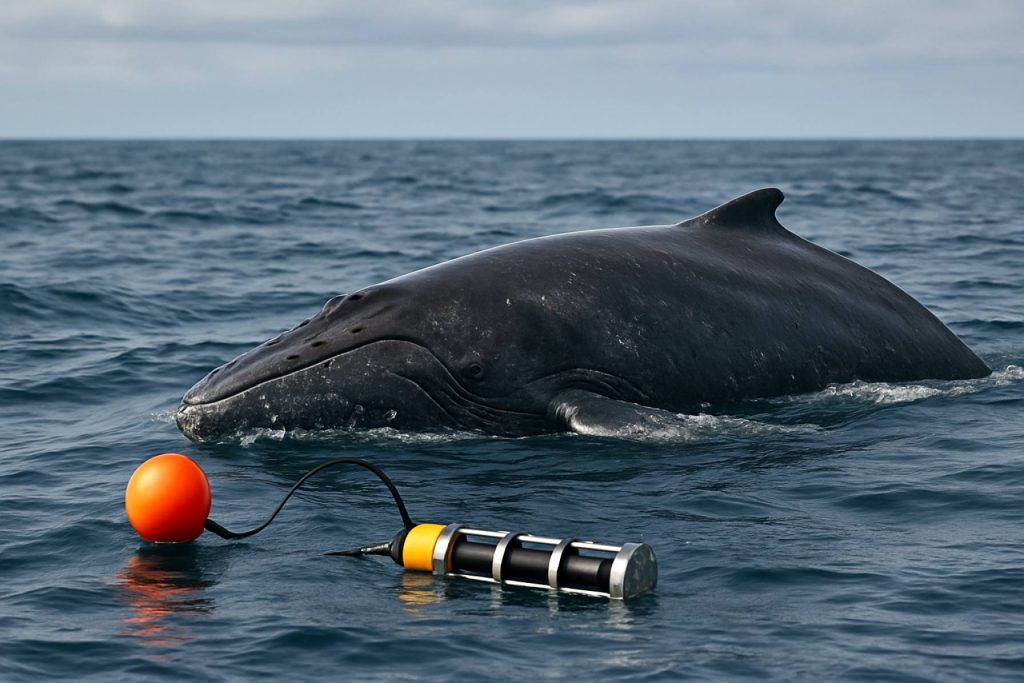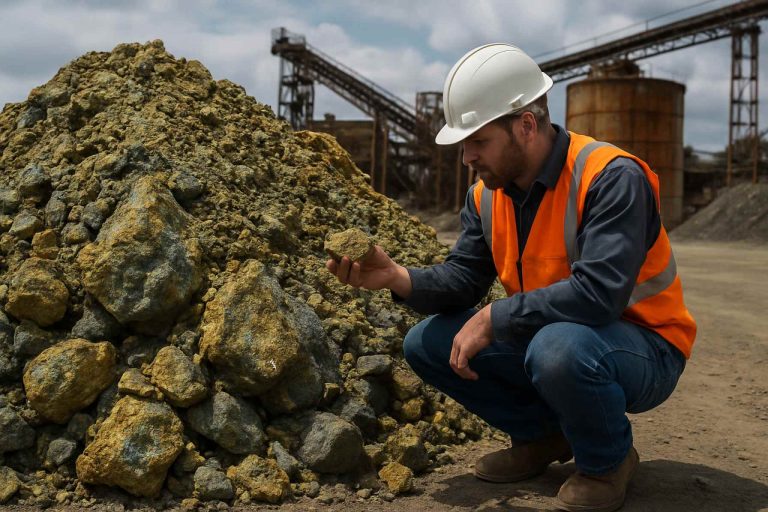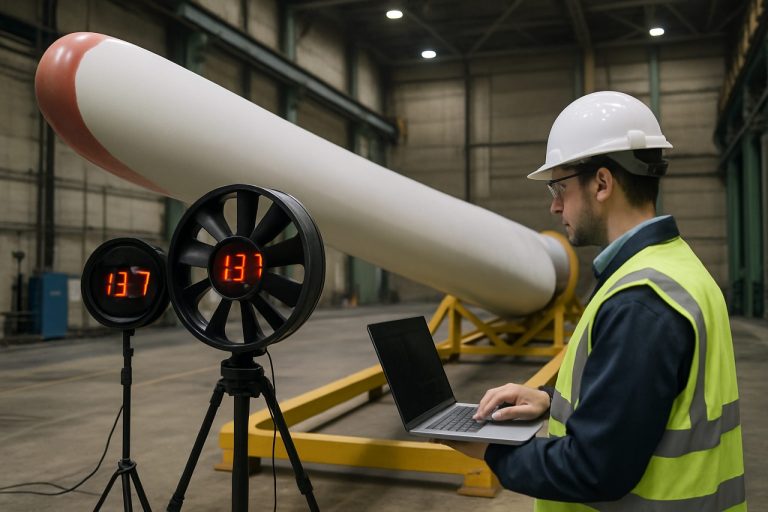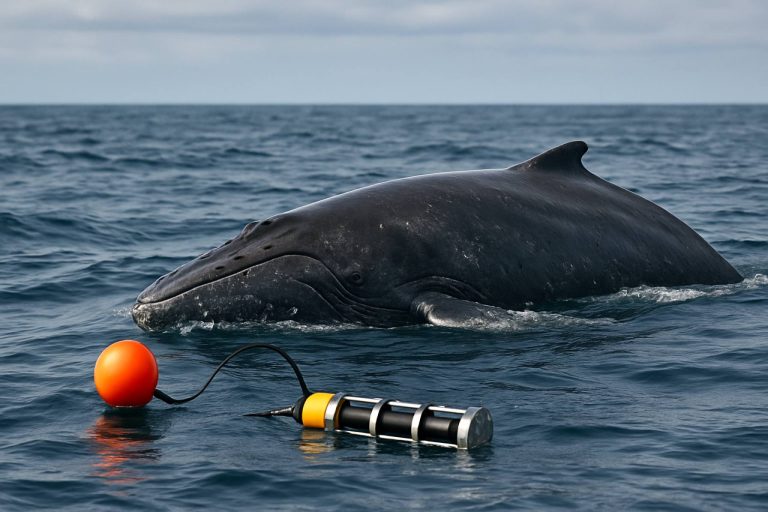
Table of Contents
- Executive Summary: Key Takeaways & Market Drivers for 2025
- Whale Hydroacoustic Localization: How the Technology Works
- Current Market Landscape: Leading Players and Regional Hubs
- Latest Innovations in Sensor Arrays and AI Integration
- Regulatory Landscape and International Standards (2025-2030)
- Market Forecast: Growth Projections and Revenue by Segment (2025–2030)
- Key Applications: Conservation, Energy, Shipping, and Defense
- Challenges: Signal Interference, Data Management, and Deep-Sea Deployment
- Notable Case Studies: Deployments by Industry Leaders
- Future Outlook: Emerging Trends and Strategic Opportunities
- Sources & References
Executive Summary: Key Takeaways & Market Drivers for 2025
The global adoption of whale hydroacoustic localization systems is accelerating in 2025, driven by urgent conservation imperatives, regulatory mandates, and growing integration with digital ocean monitoring infrastructure. These systems, which utilize arrays of underwater hydrophones and advanced signal processing to detect and localize whale vocalizations, have become essential tools for mitigating ship strike risk, informing offshore construction, and supporting marine research.
Key market drivers for 2025 include heightened enforcement of marine mammal protection regulations, particularly in North America and Europe, where maritime authorities require real-time whale detection to minimize anthropogenic impacts. The International Maritime Organization (IMO) and regional bodies are pushing for broader adoption of monitoring technologies to comply with environmental standards and reduce vessel-whale collisions. This regulatory momentum is prompting ports, shipping lines, and offshore energy operators to invest in hydroacoustic systems, in partnership with technology providers and conservation organizations.
Leading manufacturers and integrators—such as Kongsberg Gruppen, L3Harris Technologies, and Sonardyne International—are advancing the market with new hardware and software optimized for whale localization. Recent technological innovations include AI-enabled signal classification, data fusion with satellite and AIS vessel tracking, and the deployment of autonomous buoy and glider platforms equipped with compact hydrophone arrays. These advances enable persistent, wide-area monitoring and faster alerting to at-risk vessels and infrastructure.
Data from pilot deployments in 2024 have demonstrated the systems’ efficacy in reducing whale-vessel interactions and supporting adaptive management of offshore activities. For example, collaborative efforts between government agencies and private sector operators have resulted in temporary rerouting of shipping lanes and dynamic speed restrictions based on real-time whale presence data. This trend is set to expand in 2025, with further validation of system performance and continued public-private collaborations.
Looking ahead, the outlook for whale hydroacoustic localization systems includes increasing standardization, integration with broader ocean observatories, and the extension of these systems into new regions, including Asia-Pacific and South America. The market is expected to benefit from ongoing investments in ocean sensor networks and digital maritime infrastructure, positioning hydroacoustic localization as a critical pillar of marine stewardship and sustainable ocean use over the next several years.
Whale Hydroacoustic Localization: How the Technology Works
Whale hydroacoustic localization systems utilize underwater sound detection to identify, track, and monitor the presence and movement of whales. As of 2025, these systems are increasingly relied upon for both scientific research and mitigation of human impacts, particularly in areas with significant shipping, naval, or offshore energy activity. The technology harnesses arrays of underwater microphones (hydrophones) that capture the low-frequency vocalizations produced by various whale species. These sounds are then processed and analyzed to determine the location, direction, and often the species of the whale.
The core principle behind hydroacoustic localization is triangulation. By measuring the time delays between when a whale’s call is received at different hydrophones in an array, the system calculates the source’s position. Advanced digital signal processing algorithms, often enhanced by artificial intelligence and machine learning, are now deployed to improve localization accuracy, even in noisy marine environments. Real-time data processing, sometimes onboard autonomous platforms, enables immediate detection and localization, which is critical for rapid response applications such as vessel strike mitigation.
Recent deployments, like those by Ocean Instruments NZ and Kongsberg Gruppen, utilize fixed and mobile hydrophone arrays, sometimes mounted on autonomous underwater vehicles (AUVs), surface buoys, or even gliders. These platforms transmit acoustic data wirelessly to shore or to ships, where operators or automated systems analyze the signals. The integration of machine learning models, as seen in collaboration with entities like Woods Hole Oceanographic Institution, allows for automated species recognition and call classification, which is crucial for large-scale monitoring.
One significant trend in 2025 is the move towards highly distributed listening networks, with multiple small-scale hydrophone nodes covering larger areas. This approach, adopted by companies such as Sonardyne International, increases spatial coverage while reducing the chance of missed detections. Data fusion from multiple platforms—fixed, mobile, and drifting—enables richer datasets and improved localization confidence.
Looking forward, continued advances in sensor miniaturization, battery technology, and cloud-based data processing are expected to further enhance the performance and deployment flexibility of whale hydroacoustic localization systems. These improvements will facilitate broader adoption for environmental monitoring, regulatory compliance, and conservation, especially as offshore wind and shipping activities expand in sensitive marine habitats.
Current Market Landscape: Leading Players and Regional Hubs
The whale hydroacoustic localization systems market in 2025 is characterized by a dynamic interplay of established maritime technology companies, specialized acoustic solution providers, and cross-sector collaborations with research and conservation organizations. The increasing global emphasis on marine biodiversity monitoring, stricter environmental regulations, and the expansion of offshore wind and energy projects have collectively spurred investment and innovation in this sector.
Leading players in the market include Kongsberg Gruppen, Sonardyne International, and Teledyne Marine. These companies leverage decades of expertise in underwater acoustics, supplying a range of hydrophones, passive acoustic monitoring (PAM) arrays, and real-time localization systems for both scientific and industrial applications. Their systems are frequently used in large-scale marine mammal monitoring programs around the world, with ongoing upgrades to improve spatial accuracy, detection range, and data integration with vessel navigation and mitigation protocols.
In North America, the U.S. and Canada remain regional hubs, supported by extensive coastline research infrastructure and strict regulatory oversight regarding marine mammal safety in commercial and energy operations. Organizations such as Ocean Instruments and Wilton Scientific contribute to the supply of deployable PAM buoys and portable hydrophone solutions. The U.S. National Oceanic and Atmospheric Administration (NOAA) continues to foster public-private partnerships to advance real-time whale detection for ship strike mitigation in busy shipping lanes.
In Europe, the United Kingdom, Norway, and Germany have emerged as focal points for innovation, propelled by stringent environmental standards and the rapid expansion of offshore wind farms. Companies like Fraunhofer and ecoSUB Robotics are actively developing autonomous acoustic monitoring vehicles and modular sensor platforms, positioning the region as a leader in integrated, remote, and scalable solutions.
Asia-Pacific is witnessing increasing activity, particularly in Japan and Australia, where marine research institutes collaborate with technology suppliers to monitor cetacean populations in the context of coastal development and fisheries management. Regional collaborations are anticipated to intensify as new marine protected areas are designated and maritime traffic increases.
Looking ahead, the next few years are expected to see market growth driven by digitalization—cloud-based data analytics, AI-powered call classification, and seamless integration with maritime situational awareness platforms. Sustained R&D investment and evolving regulatory frameworks will likely spur both the deployment of advanced systems and the entry of new competitors, further diversifying the market landscape.
Latest Innovations in Sensor Arrays and AI Integration
The evolution of whale hydroacoustic localization systems in 2025 is marked by significant advancements in both sensor array technology and artificial intelligence (AI) integration, driven by the growing need for accurate, real-time marine mammal monitoring to support conservation and regulatory compliance. Sensor arrays are becoming more sophisticated, leveraging denser hydrophone networks, wide-band sensors, and advanced signal processing algorithms to enable precise localization in complex ocean environments.
A major trend in 2025 is the deployment of distributed underwater acoustic sensor arrays, including both stationary seabed networks and mobile platforms, such as autonomous underwater vehicles (AUVs) and gliders. Companies like Kongsberg Maritime and Teledyne Technologies have introduced modular, scalable hydrophone arrays equipped with low-noise, wide-dynamic-range sensors capable of capturing subtle whale vocalizations across vast distances. These arrays are increasingly being integrated with surface and aerial platforms to facilitate multi-modal tracking and broaden spatial coverage.
Simultaneously, AI and machine learning are revolutionizing acoustic data analysis. In 2025, real-time detection, classification, and localization of whale calls are increasingly automated through deep learning models trained on extensive datasets. Wildlife Acoustics and Ocean Infinity are among the organizations developing onboard AI processors for their hydroacoustic recorders and monitoring systems, enabling event-driven data transmission and reducing bandwidth requirements. These AI systems can rapidly differentiate between species, filter out noise, and adjust detection parameters in response to changing oceanographic conditions, significantly improving the reliability of whale localization.
Another innovation is the integration of hydroacoustic data with environmental and positional information, such as temperature, salinity, and GPS-based array localization. This holistic approach, supported by platforms from Kongsberg Maritime and ongoing collaborations with research institutions, enhances localization accuracy, especially in dynamic environments like offshore wind farm zones or shipping lanes.
Looking ahead into the next few years, the trend toward cloud-based data aggregation and collaborative analysis is expected to accelerate, with companies offering open interfaces for sharing acoustic detections and localization results with regulatory agencies, research groups, and industry stakeholders. The continuing miniaturization of sensor nodes and increasing onboard processing power will further enable widespread deployment on a variety of platforms, expanding coverage and robustness of whale hydroacoustic localization systems for both scientific and operational applications.
Regulatory Landscape and International Standards (2025-2030)
The regulatory landscape for whale hydroacoustic localization systems is evolving rapidly as governments and international bodies respond to both the urgency of marine mammal protection and the expanding use of ocean space for shipping, energy, and research. By 2025, several key regulatory frameworks and standards are shaping system deployment and operational protocols, with significant developments anticipated through 2030.
In recent years, the United States has strengthened its Marine Mammal Protection Act (MMPA) mandates, increasingly requiring real-time acoustic monitoring for permitting offshore wind, oil and gas, and shipping projects in regions frequented by endangered whale species. The National Oceanic and Atmospheric Administration (National Oceanic and Atmospheric Administration) is central to these efforts, actively funding and deploying passive acoustic monitoring (PAM) arrays as part of environmental impact assessments and mitigation strategies. Similarly, the European Union’s Marine Strategy Framework Directive (MSFD) compels member states to assess and mitigate underwater noise pollution, prompting coordinated investments in hydroacoustic localization infrastructure across the North Atlantic and Mediterranean.
On the international stage, the International Maritime Organization (International Maritime Organization) is advancing guidelines that encourage the integration of hydroacoustic localization data into vessel tracking and routing systems to reduce ship strikes—a leading cause of whale mortality. These guidelines are expected to become more prescriptive by the late 2020s, potentially mandating real-time whale detection and notification for large commercial vessels in high-risk zones.
Technical standards are also maturing. The International Organization for Standardization (International Organization for Standardization) is currently developing standards for passive acoustic monitoring instrumentation, calibration, and data sharing, with a focus on interoperability and data quality assurance. These standards, anticipated for adoption by 2026, will facilitate cross-jurisdictional data exchange and coordinated conservation responses.
Industry players—including hydroacoustic system manufacturers and integrators—are contributing to standards development through industry consortia and working groups, such as those convened by the International Electrotechnical Commission (International Electrotechnical Commission). Compliance with emerging standards is becoming a prerequisite for system procurement in government and international projects, driving technological convergence and innovation.
Looking ahead to 2030, regulatory trends suggest a transition from voluntary to mandatory deployment of whale hydroacoustic localization systems in sensitive marine corridors, with increasing emphasis on real-time monitoring, AI-driven localization, and automated alerting. This regulatory momentum is likely to stimulate further investment in advanced acoustic sensing networks, open data platforms, and collaborative international monitoring initiatives.
Market Forecast: Growth Projections and Revenue by Segment (2025–2030)
The market for Whale Hydroacoustic Localization Systems is anticipated to experience robust growth from 2025 through 2030, driven by a combination of regulatory pressures, technological innovation, and increasing offshore industrial activity. Heightened concern over marine mammal protection—particularly in the context of expanding offshore wind, shipping, and oil and gas operations—has led to stricter mandates for real-time whale detection and localization solutions. Regulatory bodies in North America and Europe are expected to maintain or increase requirements for acoustic monitoring in designated marine mammal protection zones, stimulating demand for advanced hydroacoustic localization systems.
By 2025, revenue from commercial deployments is projected to be led by integrated hydrophone array systems and real-time passive acoustic monitoring (PAM) solutions. Leading manufacturers such as Kongsberg Maritime, Sonardyne International, and Fugro are expanding their offerings to include AI-driven localization and identification features, which promise higher detection accuracy and faster response times. The shipborne and fixed-platform segments, which encompass both permanent installations on offshore infrastructure and mobile solutions for research or mitigation vessels, are expected to capture the largest share of the market revenue.
Segment-wise, offshore wind farm operators are projected to be the fastest-growing end-user group, given the rapid expansion of projects in the North Sea, US Atlantic, and East Asia. The demand for hydroacoustic localization solutions from this segment is forecasted to nearly double between 2025 and 2030, as developers seek to comply with environmental impact mitigation requirements. Similarly, government-funded marine biology and conservation programs are expected to boost procurement of portable and autonomous systems, such as those developed by Sonardyne International and Kongsberg Maritime.
In terms of revenue, the global market for Whale Hydroacoustic Localization Systems is projected to reach several hundred million US dollars by 2030, with a compound annual growth rate (CAGR) estimated in the high single digits. Real-time monitoring and AI-enhanced data analytics are expected to be the primary drivers of value creation, with manufacturers increasingly offering subscription-based software and support services alongside hardware sales.
Looking ahead, continued advancements in sensor miniaturization, machine learning algorithms for call classification, and integration with multi-sensor ocean monitoring networks are likely to further expand the market’s reach and capabilities. Companies such as Fugro and Kongsberg Maritime are investing in R&D to support new deployment scenarios, including unmanned surface and sub-surface vehicles. As a result, the market outlook for whale hydroacoustic localization systems remains strongly positive through 2030.
Key Applications: Conservation, Energy, Shipping, and Defense
Whale hydroacoustic localization systems are advancing rapidly in 2025, addressing critical needs in conservation, offshore energy, global shipping, and maritime defense. These systems employ sophisticated underwater microphones (hydrophones) and advanced signal processing to pinpoint whale vocalizations, enabling real-time monitoring and location tracking of cetaceans across large marine areas.
In conservation, hydroacoustic localization is a cornerstone for reducing whale-ship collisions and mitigating the impact of human activities. Organizations such as the Woods Hole Oceanographic Institution and Ocean Instruments are deploying dense arrays of hydrophones along key migratory routes and within marine protected areas. Real-time detection and localization data are increasingly integrated with vessel alert systems, allowing ships to alter course or reduce speed when whales are detected nearby. This approach is supported by collaborations between technology providers and environmental agencies, aiming to meet evolving regulatory mandates for marine mammal protection.
The energy sector, particularly offshore wind and oil & gas, is leveraging hydroacoustic localization to comply with environmental regulations and minimize disturbance to marine mammals. Companies like Kongsberg Maritime and Sonardyne International are supplying integrated monitoring solutions for real-time whale tracking around construction and operational zones. These systems inform operational pauses during pile driving or seismic surveys, reducing the risk of acoustic injury to whales. In the next few years, stricter guidelines from regulatory bodies are expected to drive wider adoption of such systems across new offshore developments.
In shipping, the integration of hydroacoustic localization data with automatic identification systems (AIS) and onboard navigation platforms is gaining traction. Major ports and shipping lines now invest in partnerships with technology firms like Fugro to install fixed or mobile hydrophone networks along busy corridors. The resulting whale presence alerts are relayed directly to vessels, fostering safer navigation and compliance with voluntary or mandated speed restrictions. As the International Maritime Organization (IMO) advances its focus on marine biodiversity, industry-wide standards for whale detection and avoidance are anticipated within the next few years.
In defense, navies and maritime security agencies are adapting whale localization systems to differentiate between biological and mechanical sources in underwater monitoring. This enhances both the protection of marine mammals and the accuracy of submarine and drone detection. Firms such as Thales Group and Leonardo are developing dual-use hydroacoustic arrays for environmental monitoring and naval surveillance, with new deployments planned through 2026 as part of broader marine domain awareness initiatives.
Overall, the outlook for whale hydroacoustic localization systems is marked by expanding cross-sector adoption, driven by regulatory, ethical, and operational imperatives. The next few years will likely see further integration of these technologies into global maritime operations, supported by ongoing innovation from leading marine instrumentation providers.
Challenges: Signal Interference, Data Management, and Deep-Sea Deployment
Whale hydroacoustic localization systems, which rely on detecting and analyzing underwater sound to track and monitor whale populations, face persistent and evolving challenges as deployment scales in 2025 and beyond. Three primary areas of concern are signal interference, data management, and deep-sea deployment logistics.
Signal interference remains a fundamental obstacle. As marine environments become increasingly noisy due to shipping, industrial activity, and offshore energy infrastructure, distinguishing whale vocalizations from anthropogenic sounds is more complex. Modern systems employ advanced digital signal processing and machine learning algorithms to filter noise and improve detection accuracy, but as commercial and military sonar activity expands, interference risks grow. Companies like Kongsberg Maritime and iXblue are actively enhancing hydrophone array designs and software to mitigate these effects, yet real-world deployments reveal that separating biological signals from noise in busy seaways or deepwater energy zones is an ongoing technical hurdle.
Data management is a second, rapidly escalating challenge. Next-generation hydroacoustic systems generate vast data streams, particularly in networked deployments or when using high-frequency arrays for three-dimensional localization. Efficient data transmission, storage, and real-time analysis are critical. Edge processing—where data is partially analyzed on remote devices before transmission—is becoming more prevalent to reduce bandwidth requirements and enable faster response times. Organizations such as Tekmar Group and Teledyne Marine are investing in edge-computing modules and robust software platforms to address these needs, but integrating these solutions with legacy infrastructure and ensuring cybersecurity remains a significant challenge for the sector.
Deep-sea deployment introduces its own set of technical complexities. Hydroacoustic localization in the hadal or abyssal zones requires durable equipment capable of withstanding extreme pressures, corrosive environments, and limited access for maintenance. Battery life, power management, and communication with surface stations are all critical. Innovations in long-duration autonomous platforms and deep-rated hydrophones by suppliers like Sonardyne International are expanding monitoring possibilities, but deployment and retrieval logistics—especially for cabled arrays or moored buoys—present cost and operational risks that can restrict widespread adoption.
Looking ahead, the outlook for overcoming these challenges is promising, with industry collaborations and technology advances expected to yield more robust, scalable solutions. However, as sensor networks proliferate and monitoring mandates tighten, addressing interference, data management, and deep-sea deployment will remain central to the effectiveness of whale hydroacoustic localization systems through 2025 and the following years.
Notable Case Studies: Deployments by Industry Leaders
Over the past several years, whale hydroacoustic localization systems have transitioned from research prototypes to robust operational tools deployed by industry leaders, especially in sectors such as offshore energy, maritime transportation, and environmental monitoring. As of 2025, notable case studies exemplify both the technological maturation and the expanding adoption of these systems.
One significant deployment is by Ocean Infinity, a global marine robotics company. Since early 2024, Ocean Infinity has integrated advanced hydroacoustic localization arrays into their remotely operated and autonomous surface vessels. These arrays, leveraging real-time passive acoustic monitoring (PAM), allow for continuous tracking of baleen and toothed whales in project areas, supporting both regulatory compliance and operational risk reduction. The company’s operational reports highlight successful detection and localization of North Atlantic right whales (Eubalaena glacialis) in the North Atlantic and gray whales (Eschrichtius robustus) in the Pacific, using arrays with spatial localization accuracy within 100 meters.
Another leader, Kongsberg Gruppen, has in 2023-2025 delivered integrated hydroacoustic monitoring solutions as part of its portfolio for offshore wind farm developers. These systems use tetrahedral hydrophone clusters and advanced digital signal processing to provide 3D localization of cetaceans over several kilometers. Notably, deployments on floating wind platforms in the North Sea have demonstrated not only accurate localization but also the capacity for real-time data relay to construction and vessel crews, enabling dynamic mitigation measures.
In North America, L3Harris Technologies has collaborated with governmental agencies and academic partners to deploy hydroacoustic localization buoys along the U.S. Atlantic coast. Their case studies report on the integration of AI-driven sound classification algorithms with hydrophone networks, resulting in reduced false positives and improved detection rates for endangered species. These systems have been credited with supporting NOAA’s vessel speed restriction recommendations and informing adaptive management decisions.
Looking forward, the trend is toward larger, distributed networks of hydroacoustic sensors, with leading companies prioritizing modularity and interoperability to support multi-use monitoring (e.g., for both marine mammal and anthropogenic noise detection). With regulatory pressure intensifying—especially in North America and Europe—industry leaders are expected to further scale up deployments, integrate with satellite and drone-based observation methods, and refine real-time alerting systems to ensure both marine mammal protection and uninterrupted offshore operations.
Future Outlook: Emerging Trends and Strategic Opportunities
As the global emphasis on marine conservation and sustainable ocean use intensifies, the outlook for whale hydroacoustic localization systems in 2025 and the coming years reflects notable innovation, expanding adoption, and strategic partnerships. These systems—leveraging underwater microphones (hydrophones) and advanced signal processing—are increasingly seen as vital tools for both protecting marine mammals and enabling responsible maritime activities.
A key trend is the integration of artificial intelligence (AI) and machine learning (ML) algorithms into hydroacoustic localization platforms. These technologies enhance the real-time detection, classification, and localization of whale vocalizations, which is critical for mitigating ship strikes and supporting regulatory compliance. For example, Kongsberg Maritime has been developing systems that combine hydroacoustic sensing with AI-driven analytics to automate whale detection, reducing reliance on manual monitoring and increasing operational efficiency.
Another significant development is the deployment of distributed networked sensor arrays over larger marine areas. Companies like Wärtsilä are advancing integrated solutions that employ multiple hydrophones connected via wireless or cabled networks, providing broader spatial coverage and higher localization accuracy. This approach is particularly valuable for shipping lanes and offshore wind developments, where minimizing impacts on migratory whale populations is a regulatory and ethical priority.
Furthermore, there is a growing movement toward open data standards and interoperability. Leading industry organizations and technology suppliers are collaborating to enable data sharing between different platforms and stakeholders, including port authorities, shipping operators, and marine conservation agencies. Initiatives led by groups such as the Intergovernmental Oceanographic Commission of UNESCO are fostering the adoption of standardized acoustic monitoring protocols, which is expected to accelerate the integration of whale localization data into broader ocean observation networks.
Looking ahead, the market for whale hydroacoustic localization systems is poised to expand beyond traditional research and conservation realms. The offshore energy sector—especially offshore wind—is emerging as a major adopter, driven by requirements to monitor and mitigate impacts on marine mammals during construction and operation. Strategic partnerships between technology providers, such as Sonardyne International, and offshore energy developers are anticipated to proliferate, with joint ventures focused on tailored monitoring solutions.
In summary, the next few years will see whale hydroacoustic localization systems become more intelligent, scalable, and integrated across multiple sectors. Enhanced detection capabilities, networked deployments, and collaborative frameworks will position these technologies as central to marine stewardship and sustainable ocean industry growth.
Sources & References
- Kongsberg Gruppen
- L3Harris Technologies
- Ocean Instruments NZ
- Teledyne Marine
- Ocean Instruments
- Fraunhofer
- Teledyne Technologies
- Wildlife Acoustics
- Ocean Infinity
- International Maritime Organization
- International Organization for Standardization
- Fugro
- Thales Group
- Leonardo
- iXblue
- Tekmar Group
- Wärtsilä
- Intergovernmental Oceanographic Commission of UNESCO



